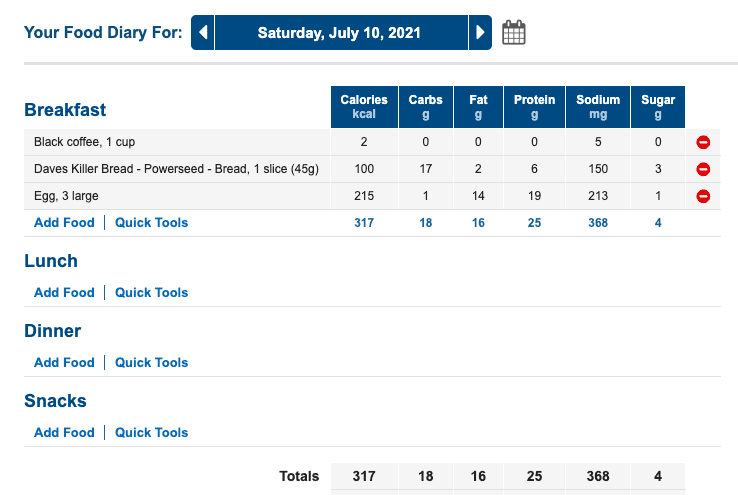Daily Calories: How and Why it’s Good to Track Them plus Tools to Help!
Tracking daily calories can be an essential part of your wellness journey, and there are plenty of helpful tools to simplify this seemingly daunting task. While some people might think it’s unnecessary, studies have shown that consistent self-monitoring is a vital component of successful weight loss and management.
The best part is that there are some easy-to-use calorie counter apps to make this a simple task. All of these apps are accessible online, it takes moments to sign up, and many of them are free.
Why it’s important to track your macros for specific fitness goals.
“Macro” is short for macronutrients. They consist of the three most commonly consumed categories of nutrients that also happen to provide you with most of your body’s energy: protein, carbohydrates, and fats.
You can count calories or carbs or points, but many people focus on macros because all calories are not created equal.
Weight loss happens when you burn more calories than you consume, but it’s important to focus on what you eat as much as how much you eat.
If you’re simply counting calories, for example, you might consume the same amount of calories from three cookies as you would from one small serving of baked chicken, but one will provide you with more protein and other nutrients while the other will most likely leave you feeling dissatisfied and hungry later.
How to calculate and know what your daily calories should be.
The number of macros each person needs in their daily diet will vary depending on age, weight, current level of physical activity, personal goals, etc.
Before you can determine magic macro numbers, you’ll need to know your recommended daily calorie intake. There are many easy-to-use calculators online to help with this, including this calorie calculator from the National Institute of Health.
Once you know how many calories you should be consuming, you can determine how the correct percentage of macros. The National Academies of Science, Engineering, and Medicine recommends the following for adults: 10-35% of calories from protein, 45-65% from carbs, and 20-35% from fats.
As you begin to lose weight, remember that you’ll need to adjust calorie intake and macros.
How to track your food (macros) and what online/app tools to use.
Technology makes counting calories easy. There are several great calorie, health, or fitness trackers that offer similar tools. But, of course, they all have pros and cons, so you have to decide which one works best for you.
Some of the more popular calorie-tracking apps include Lose It!, FatSecret, Cronometer, SparkPeople, and The Bottom Line.
One of our favorites, is MyFitnessPal, a free app for iPhone and Android that tracks your weight, calculates a daily calorie intake, keeps a food diary and exercise log, and more.
 MyFitnessPal even has a social feature with a chat forum with fellow users where you can talk about your wellness journey, share recipes, seek recommendations, etc. Of course, it also keeps track of your progress, which is important since you have a visible record of your choices, and you can make changes where necessary or continue to do what works.
MyFitnessPal even has a social feature with a chat forum with fellow users where you can talk about your wellness journey, share recipes, seek recommendations, etc. Of course, it also keeps track of your progress, which is important since you have a visible record of your choices, and you can make changes where necessary or continue to do what works.
Key Takeaways:
- Counting calories is an effective way to lose weight or build muscle. However, since all calories aren’t created equal, tracking macros can help you manage the types of calories you consume.
- Consider using a calorie counter such as MyFitnessPal and make conscious choices about your food intake.
- Create your menu with macros in mind and focus on nutrient-rich foods that provide the energy your body needs.
- Weight loss, building muscle, and improved wellness is a marathon, not a sprint. So develop some healthy habits and stick with them while you do your Black Box Fitness workouts.
Alejandro tracks his Macros!

See Alejandro’s full transformation and learn how he is reaching his fitness goals and creating new ones.


